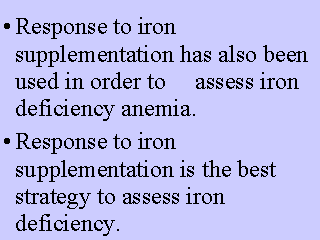 |
Response to iron supplementation has also been used in order to
assess iron deficiency anemia in women in populations with low
and high prevalence of iron deficiency. This methodology permits
estimate the true prevalence of iron deficiency and it may also be
applied for screening purposes. Response to iron supplementation is
the best strategy to assess iron deficiency
(Garby et al 1969; Freire,W 1989) where the anemic are those subjects who respond to iron supplementation.
Garby et al showed in a Swedish population with low prevalence of anemia that 20% of healthy and ill would be incorrectly classified. Using hemoglobin. When prevalence of anemia is higher, as shown by Freire, hemoglobin constitutes an adequate indicator to assess IDA, due to a higher PPV.
|
